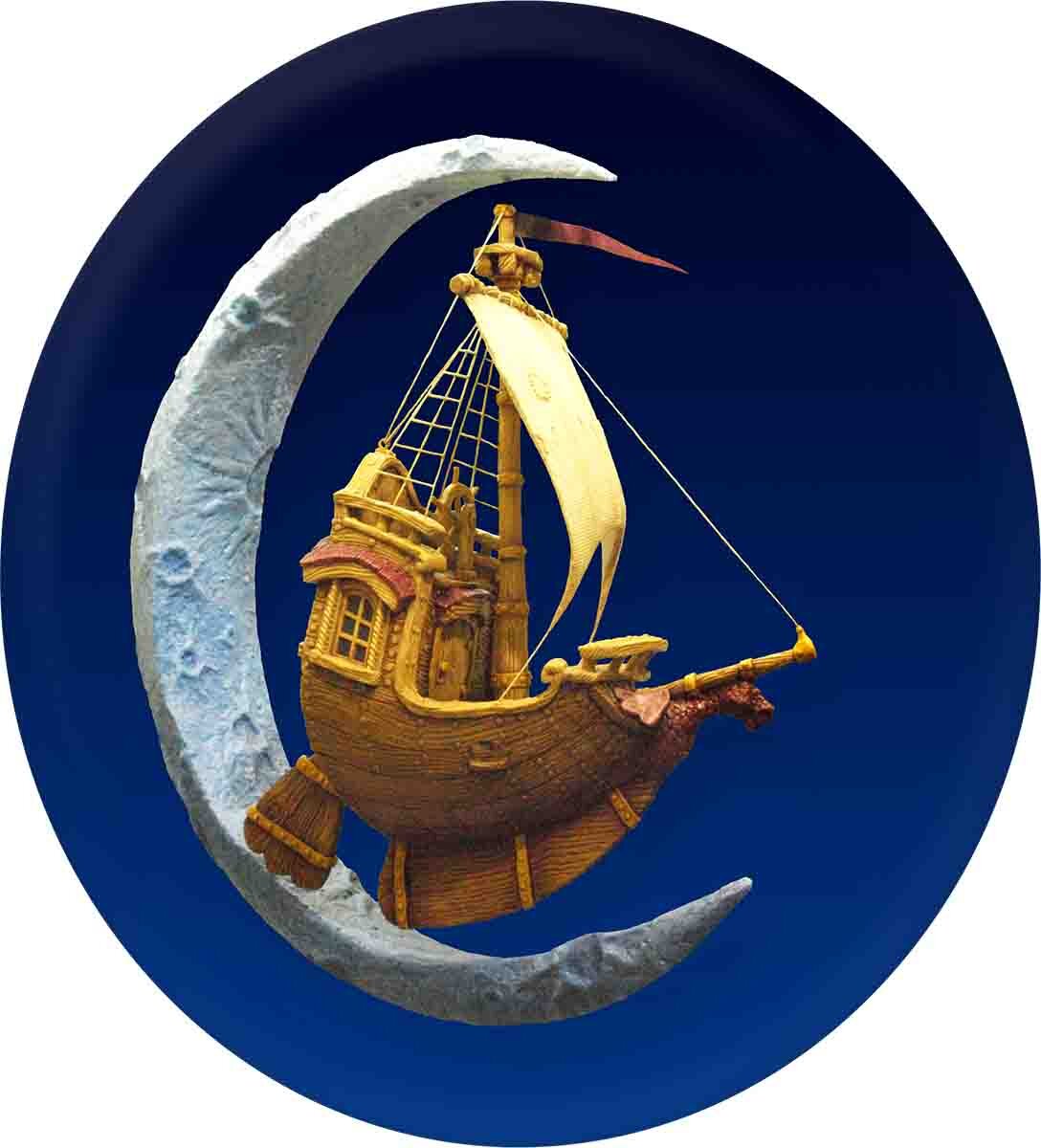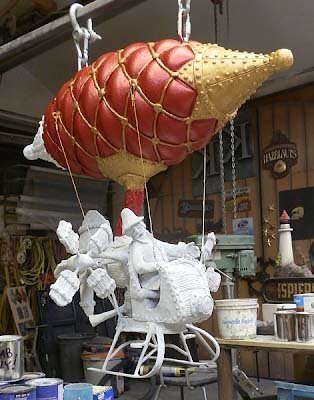Once the three layers of the Laughing Tortoise sign had finished routing, we used a die grinder to whip the shell into rough shape Then, we used compressed air to blow off the dust before gluing them up with Coastal Enterprise’s PB Bond 240. We also glued in a 1/2" steel rod for the neck. This sign is bound to get more than a little handing once it is installed; the steel will provide it plenty of strength!
Once the glue dried we gave the Tortoise Beer sign the once over with the die grinder. We carved in the scroll detail and textured up the sides to match.
After this it was time to do some preliminary sculpting on the tortoise. (The tortoise will be semi-realistic with a heavy dollop of character added.) We roughed in the head first — often, it works better to build up a foundational shape and then go back to add a detailed layer later. Then we roughed in the shell and feet. (The scales on his legs are just balls of sculpting epoxy.)
The side view shows just how dimensional this sign really is.
Once the first layer of sculpt dried, we finished sculpting the tortoise. The whole head and neck received another layer of sculpt — lots of character, wrinkles and laugh lines too.
Next week we will go through the painting process.


















